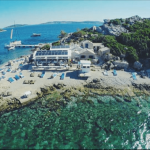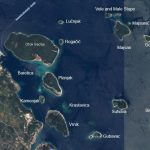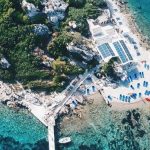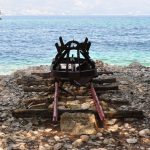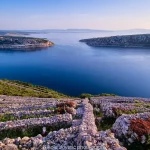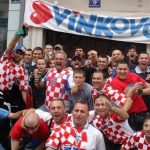If you’re arriving to Korčula by car via Orebić, after one of those nasty turns on the road taking you from Ston to Orebić you will get to see something magical: the island of Korčula with a whole bunch of islets in front of it.
There’s about a dozen of them, varying in size, but all of them interesting in their own right. The people of Korčula call them “Škoji”, borrowed from Italian, of course, and they are a very important part of life for the locals, and are now, of course, a major tourist attraction, especially for the sailors who get to visit them all. Allow us to take you through them, introduce you briefly to what they have to offer, but when you’re visiting Korčula, make sure you go visit at least some of them, and we’re sure you won’t regret it! The order in which we’ll present them is extremely random and I do apologize for that, and we’ll introduce them all in two articles:
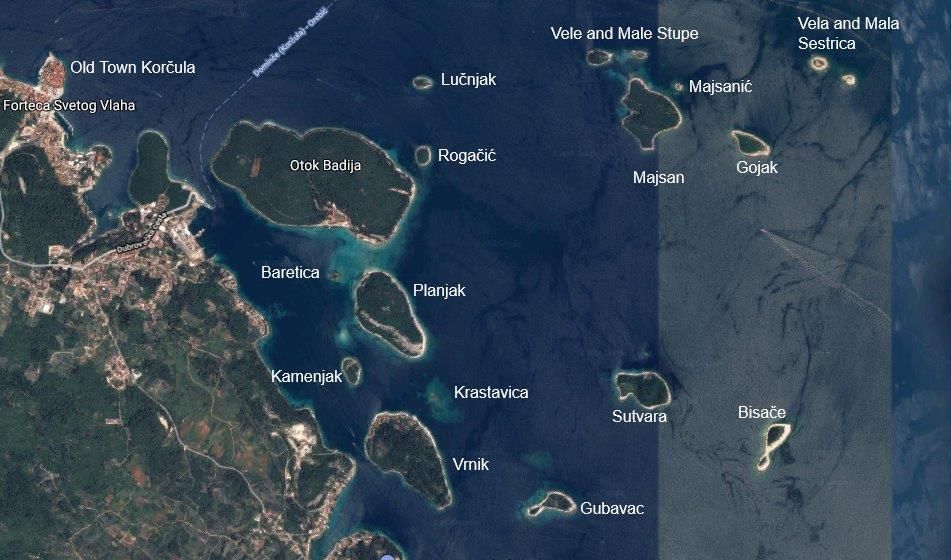
1) Badija – the biggest and the most popular of the islets, and the one that is closest to Korčula – you could easily swim from Korčula to Badija, but *please* don’t do that, because the traffic on that stretch of sea is extremely heavy during the tourist season, with ferries, catamarans, and numerous other private vessels, not all of which respect the rules of sailing. Around 100 hectares of extremely interesting history (which we’ll get into in a dedicated article), it’s best known for the monastery which was built there in the 14th century, and still exists and functions as a franciscan monastery. It has been going through comprehensive restoration since it has been returned to the church, around 15 years ago, but you can still walk around it, or even enjoy some of the concerts organized there during the Korkyra Baroque Festival. If you’re not culturally inclined, Badija offers you a chance to take a lovely walk around it, to climb the extremely mild and non-demanding hill of the islet and get to the church of St. Catharine on top, where you’ll get the wonderful view of the islets and Korčula itself, to find that one perfect secluded piece of the shoreline where you’ll spend your day basking in the sun or swimming peacefully. You can decide to have a beer or something to eat at the bar as well, or you can hang out with the fallow deer that have been living on the islet since the 1960s, are completely used to people and will not hesitate to come to you to see if you’re willing to share your sandwich with them.
2) Planjak – just south of Badija, also quite large, not as exciting in terms of stuff to see and do as Badija is, but still, a lovely island to go for a swim, especially if you enjoy the late afternoon sun on the Western side of the island. On the South-Eastern side there’s a small beach, a place to relax and enjoy, as it is shielded from maestral (and there’s also a rock which provides some natural shade in the afternoon). Sometimes you’ll be able to see sheep and/or goats on the island, don’t worry, they’re OK there, it’s an age old tradition, people are taking care of them (bringing them water) and they’re OK there during the summer. Between Badija, Korčula and Planjak* there’s a really, really small islet called Baretica, not really interesting in any other context but for the fact that you can hide your boat behind it on a day with a really strong maestral, as it will shield you from the wind coming from the North. South of Planjak, there’s another smaller islet, called Kamenjak, not very welcoming or friendly, but if you manage to get on it, you will almost certainly be the only person there at the time.
3) Vrnik – going a bit more to the South, another one of the famous Korčula islets, this one well known for its stone and sculptors, and it is the only one of the islets permanently inhabited. There are several deep stone quarries on the islet, and stone from Vrnik has been valued since the Roman times, and it’s quite safe to say that the mankind has given Vrnik the shape it has today – since so much of it has been taken elsewhere, converted into artwork or decorating numerous buildings in Croatia. You can walk around the island as well, see for yourself how rich its history was and how many human destinies there were back when dozens of people lived there (today, the last people living there are a famous sculptor Lujo Lozica and his family, but they’ve also been spending the worst of winter days on Korčula). On the Eastern side of the island, facing towards the weird-looking Bisače and Lumbarda, you will find an almost perfect swimming spot – if you’re not addicted to the traditional concept of “beach”. Wonderful, flat slabs of stone, perfect to lie on, protected from the afternoon sun by the forest of the island, unbelievably clear sea perfect for snorkeling and just enjoying the play of greens and blues and other colours sea can create. If you’re on a boat, it’s not easy to disembark there, but it’s a) possible and b) worth the effort. Vrnik’s “far side” is a favourite destination for a Sunday relaxation time for many locals as well.
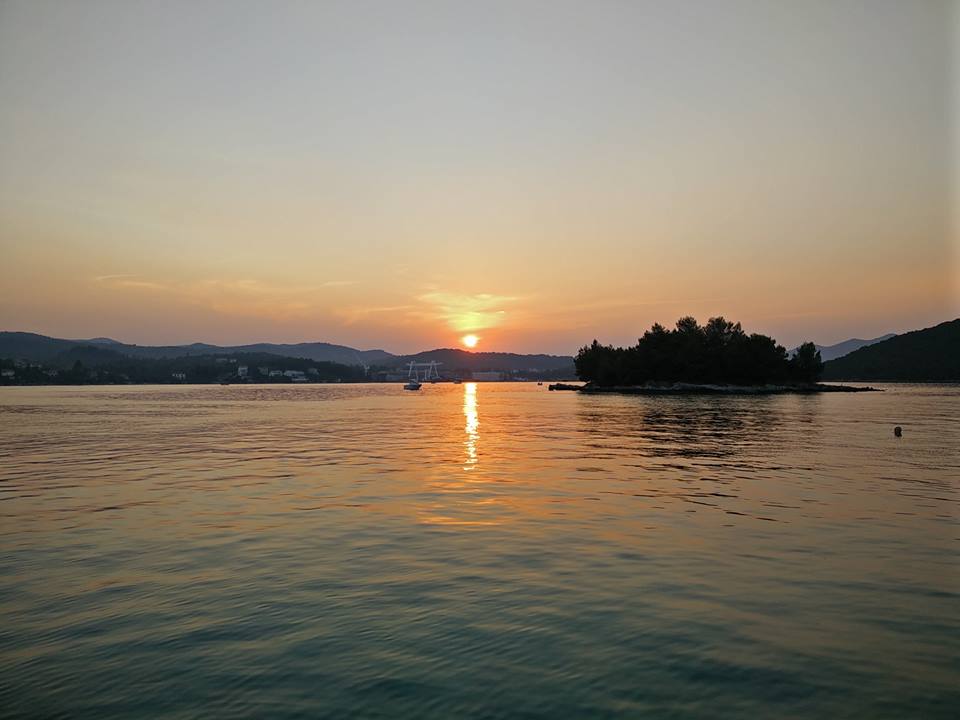
* – the narrow strait between Korčula, Planjak and Vrnik is often called “Ježevica” (name probably coming from the numerous sea urchins that can be seen there), and it’s a shallow area, with amazing places to go for a swim, with numerous boats moored there for the night, with a lot of sea traffic and many options to get away from the high-season crowds. If taking your boat through there, please respect the rules and the other people enjoying themselves, and keep your speed below 4 knots – there’s often police patrolling there, which might make you regret if you decide to speed up!
Continued here.

